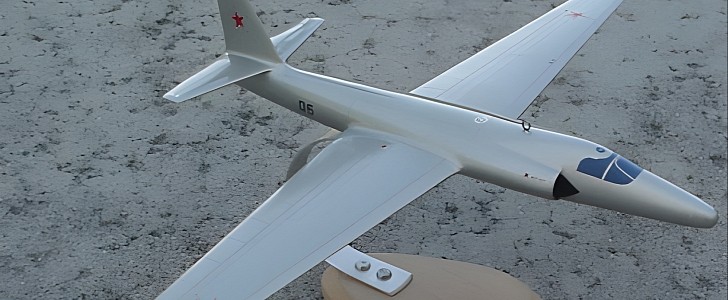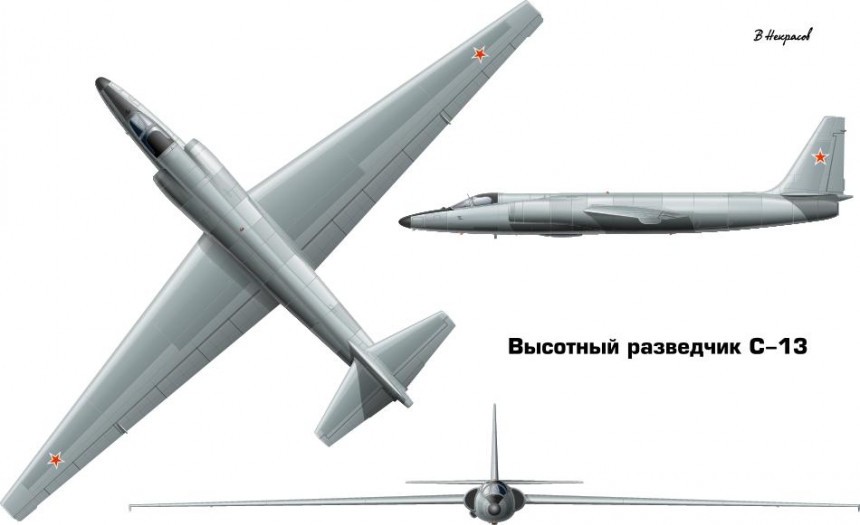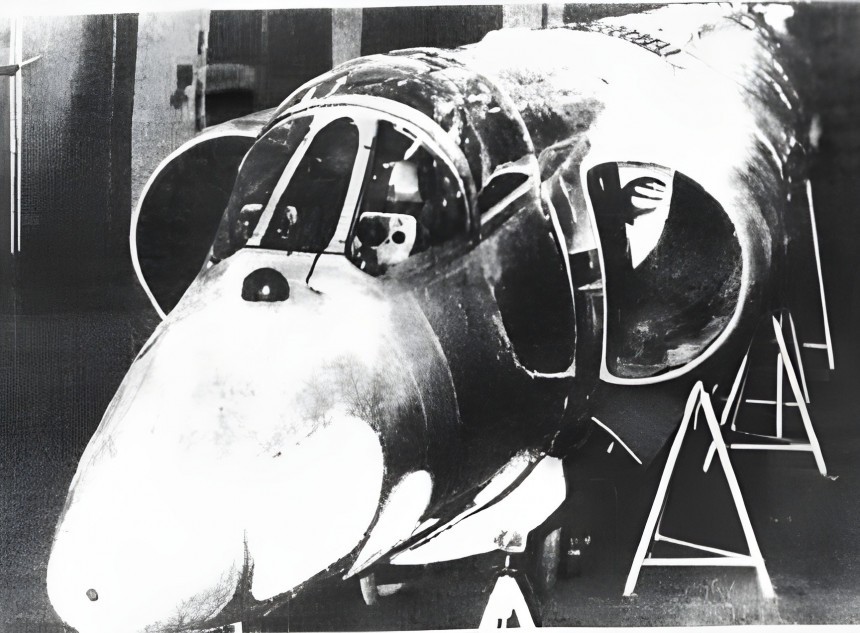The Lockheed U-2, or the Dragon Lady as its crews and pilots dubbed it, is an all-time great military airplane. As an ambassador for American air power during the Cold War, few airplanes do a better job. But what if we told you the Soviets tried their hand at building a copycat?
Would you find it ridiculous? Well, it's all true. Further still, the very existence of Beriev S-13, as the project came to be known, was directly related to one of the Cold War's hottest flashpoints. An incident that, as recently as 2015, was still being recounted in Hollywood blockbusters with star ensemble casts.
The Lockheed U-2 first took to the skies just shy of ten years to the day of the end of the Second World War, on August 1st, 1955. But with the benefit of a considerable level of captured German technology, the U.S. and USSR were able to make profound leaps in aerospace in the time between World War II's end and the beginning of the Vietnam War. Plenty of American warplanes flew faster and carried more firepower, but none flew higher than the U-2.
With a service ceiling reaching 80,000 feet (24,000 m) and a paltry top speed of just under three-quarters the speed of sound, the U-2 was impervious to almost all forms of contemporary air defenses. Extra emphasis on the "almost" in that statement. Flash forward to May 1st, 1960. A single U-2C is flying over Soviet territory after taking off from a friendly base in Pakistan with CIA pilot Francis Gary Powers at the stick.
Once in the vicinity of the southern Ural Mountains near the Soviet cities of Sverdlovsk and Chelyabinsk, a single S-75 Dvina surface-to-air missile (NATO Code SA-2 Guideline) managed to land a hit on Powers' U-2. Forcing him to bail out of his airplane and endure two years of Soviet captivity before being exchanged for the captured Soviet Intelligence Officer Rudolf Abel in an agreement between Soviet Premiere Nikita Khrushchev and U.S. President Dwight D. Eisenhower.
With the smoldering wreckage of a top-secret American spy plane now ripe for the picking in Soviet territory, it was time for engineers to start analyzing every nut and bolt on every square inch of this U-2's airframe. The man chosen to lead this research was a specialist in flying boats named Georgy Beriev.
What was most immediately obvious when looking at the U-2's components was how much more refined everything was compared to Soviet high-altitude reconnaissance airplane offerings. The closest U-2 equivalent in the Soviet arsenal, the Yakovlev Yak-25RV, a modified interceptor that ditched swept wings for long, straight ones, couldn't get close to the U-2's staggering maximum altitude.
Nor could it fly quite as fast. As it turns out, flying at high subsonic speeds at altitudes where the air is so thin it may as well be nonexistent is profoundly harder than it looks. With that in mind, it was decided if the Soviets couldn't beat a U-2, they'd just copy it.
By April 1961, Beriev had already finished the fuselage for the first prototype test vehicle. Complete with striking and visibly larger front air intakes than what a U-2 sported, as the only surviving photo of the prototype clearly shows. But just a year later, without warning, the Soviet Council of Ministers axed the program effective immediately. Why? Well, it's broadly agreed the rationale was more or less along the lines of if the Soviets could shoot down a U-2, then the Americans sure as heck could shoot down a Soviet equivalent.
Overall, space-dwelling spy satellites were determined to be better at the job. The whereabouts of the sole Beriev S-13's fuselage are unknown, although the Russians are all too happy to show off the mangled remains of their downed U-2 at the Central Armed Forces Museum in Moscow.
The Lockheed U-2 first took to the skies just shy of ten years to the day of the end of the Second World War, on August 1st, 1955. But with the benefit of a considerable level of captured German technology, the U.S. and USSR were able to make profound leaps in aerospace in the time between World War II's end and the beginning of the Vietnam War. Plenty of American warplanes flew faster and carried more firepower, but none flew higher than the U-2.
With a service ceiling reaching 80,000 feet (24,000 m) and a paltry top speed of just under three-quarters the speed of sound, the U-2 was impervious to almost all forms of contemporary air defenses. Extra emphasis on the "almost" in that statement. Flash forward to May 1st, 1960. A single U-2C is flying over Soviet territory after taking off from a friendly base in Pakistan with CIA pilot Francis Gary Powers at the stick.
Once in the vicinity of the southern Ural Mountains near the Soviet cities of Sverdlovsk and Chelyabinsk, a single S-75 Dvina surface-to-air missile (NATO Code SA-2 Guideline) managed to land a hit on Powers' U-2. Forcing him to bail out of his airplane and endure two years of Soviet captivity before being exchanged for the captured Soviet Intelligence Officer Rudolf Abel in an agreement between Soviet Premiere Nikita Khrushchev and U.S. President Dwight D. Eisenhower.
What was most immediately obvious when looking at the U-2's components was how much more refined everything was compared to Soviet high-altitude reconnaissance airplane offerings. The closest U-2 equivalent in the Soviet arsenal, the Yakovlev Yak-25RV, a modified interceptor that ditched swept wings for long, straight ones, couldn't get close to the U-2's staggering maximum altitude.
Nor could it fly quite as fast. As it turns out, flying at high subsonic speeds at altitudes where the air is so thin it may as well be nonexistent is profoundly harder than it looks. With that in mind, it was decided if the Soviets couldn't beat a U-2, they'd just copy it.
By April 1961, Beriev had already finished the fuselage for the first prototype test vehicle. Complete with striking and visibly larger front air intakes than what a U-2 sported, as the only surviving photo of the prototype clearly shows. But just a year later, without warning, the Soviet Council of Ministers axed the program effective immediately. Why? Well, it's broadly agreed the rationale was more or less along the lines of if the Soviets could shoot down a U-2, then the Americans sure as heck could shoot down a Soviet equivalent.















